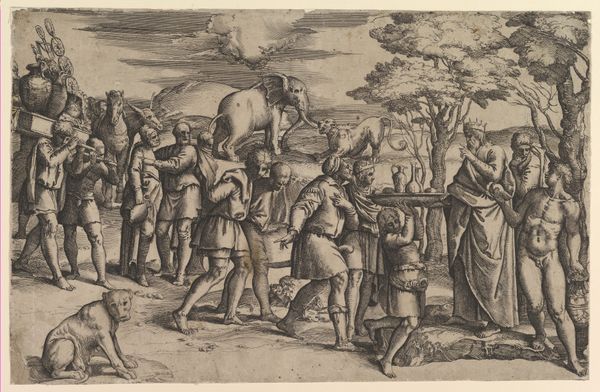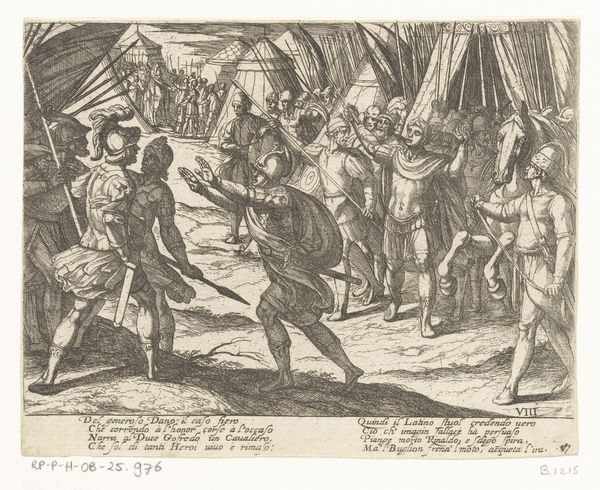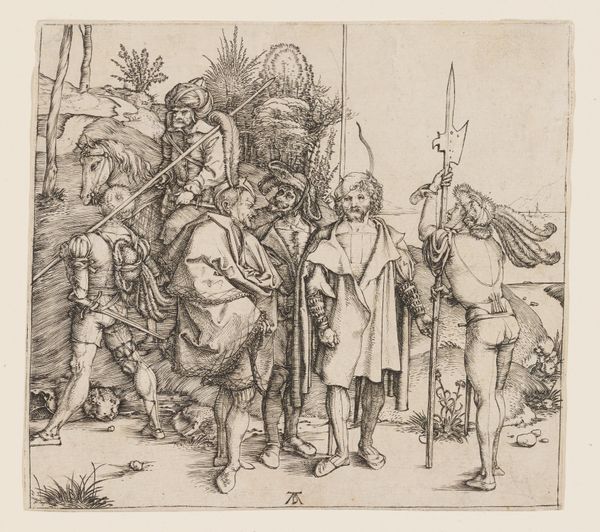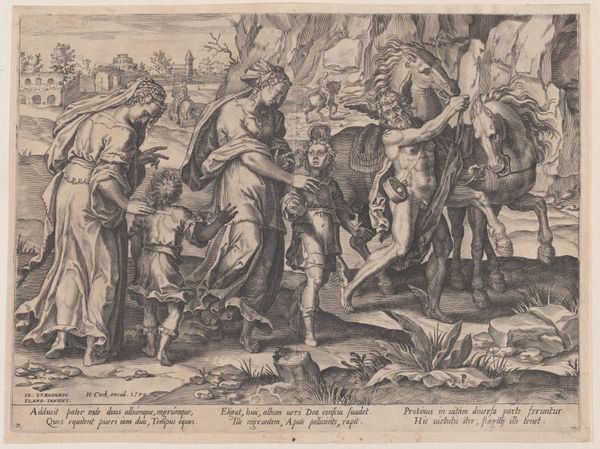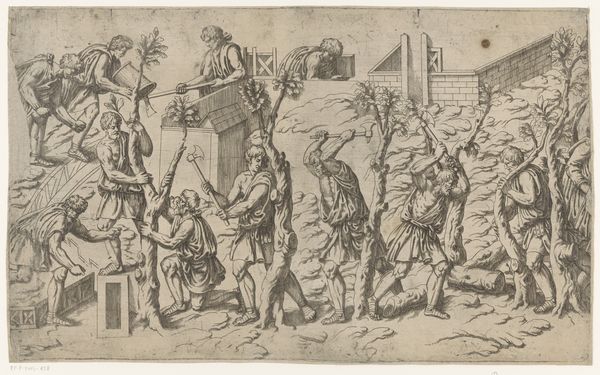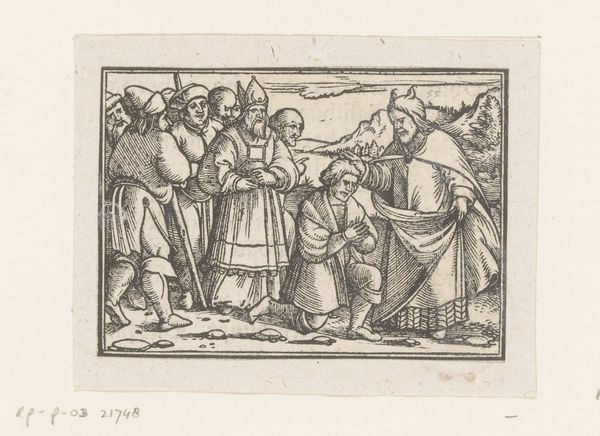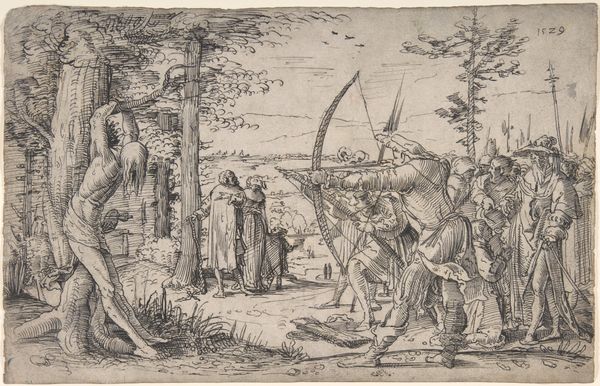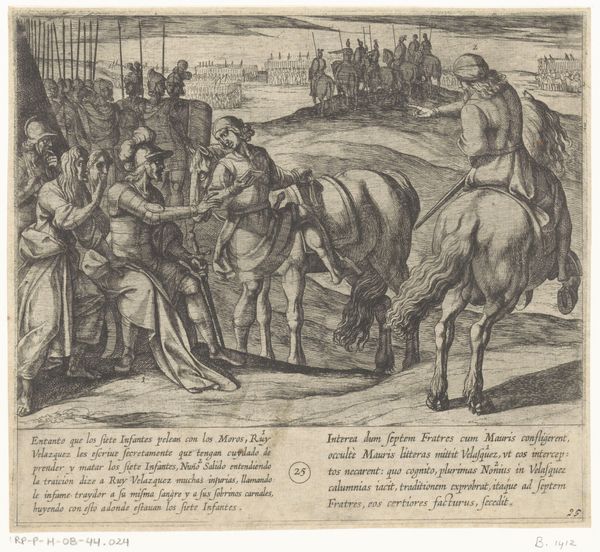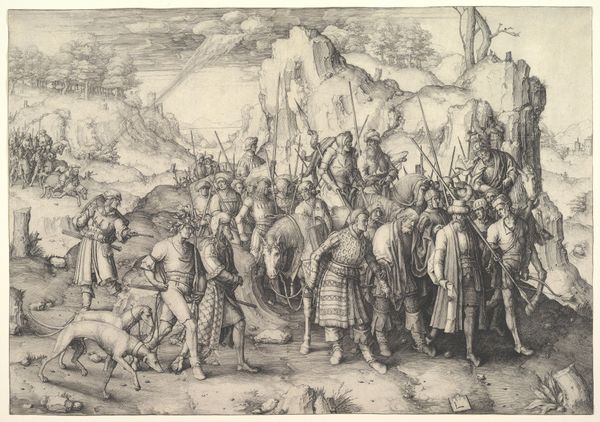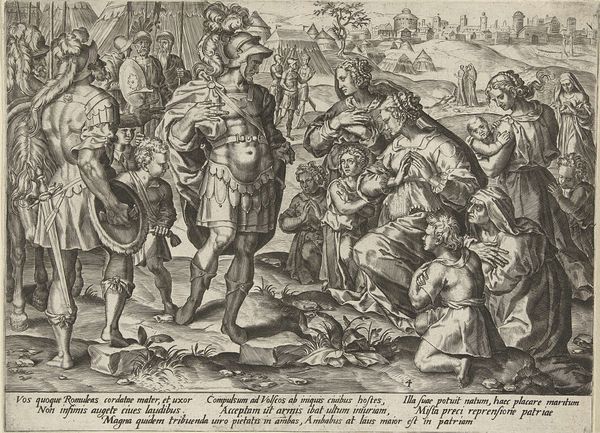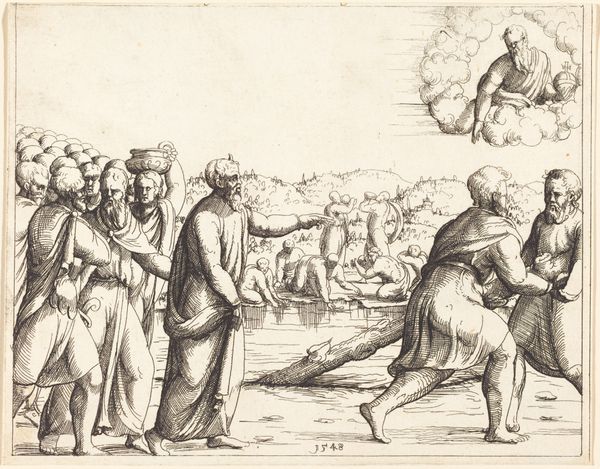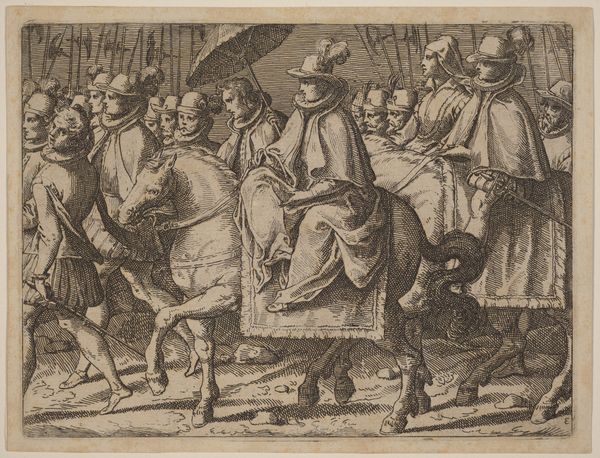
drawing, print, ink, woodcut, pen
#
drawing
#
narrative-art
# print
#
figuration
#
ink
#
woodcut
#
pen
#
history-painting
#
northern-renaissance
Dimensions: Sheet (Trimmed): 3 3/8 × 5 7/16 in. (8.6 × 13.8 cm)
Copyright: Public Domain
Editor: Here we have Christoph Bockstorffer's "The Pardoning of a Criminal," made in 1531. It’s an ink drawing, woodcut, and pen on paper, currently housed here at the Met. I’m immediately struck by how busy the composition is; all these figures crammed together in this shallow space. How do you interpret this work? Curator: This piece is densely packed, as you say, a characteristic we see often during the Northern Renaissance. Look closely: what figures dominate the scene, and what actions are they performing? I find it helpful to consider this as an allegory. The pardon becomes a very loaded symbol here. Editor: Well, the pardoned criminal kneeling definitely catches the eye. Everyone is gathered around him, almost like they're observing. But the figures on horseback, they have a more commanding presence. I suppose I hadn’t really considered it symbolically before. Curator: Exactly. The act of kneeling, the gaze of the crowd, these create a particular tension. The horseback riders could represent authority or power; are they bestowing mercy or simply maintaining order? Notice also how the hanging sign overhead almost mimics them and feels intentionally balanced with them. What feelings does it evoke when you examine these relationships? Editor: It feels like there’s a question of power being asked here. Who has it, how is it used, and who gets to decide someone is worthy of pardon? Also that sign! It does seem intentionally balanced with those figures to really emphasize the ideas of balance and consequence. Curator: Precisely. Think about what 'justice' and 'mercy' might have meant in 16th century Europe and consider what kind of psychological impact this scene of pardon might have had then and even now. These are enduring themes, aren't they? Bockstorffer captured a potent cultural narrative. Editor: It definitely makes me think about those questions, and the act of public pardon feels way more complicated and political now. I didn’t expect to read so much into a drawing! Curator: Symbolism provides lasting dialogue. A work like this serves as a reminder of how we’ve always grappled with concepts of justice and forgiveness, publicly and privately.
Comments
No comments
Be the first to comment and join the conversation on the ultimate creative platform.
